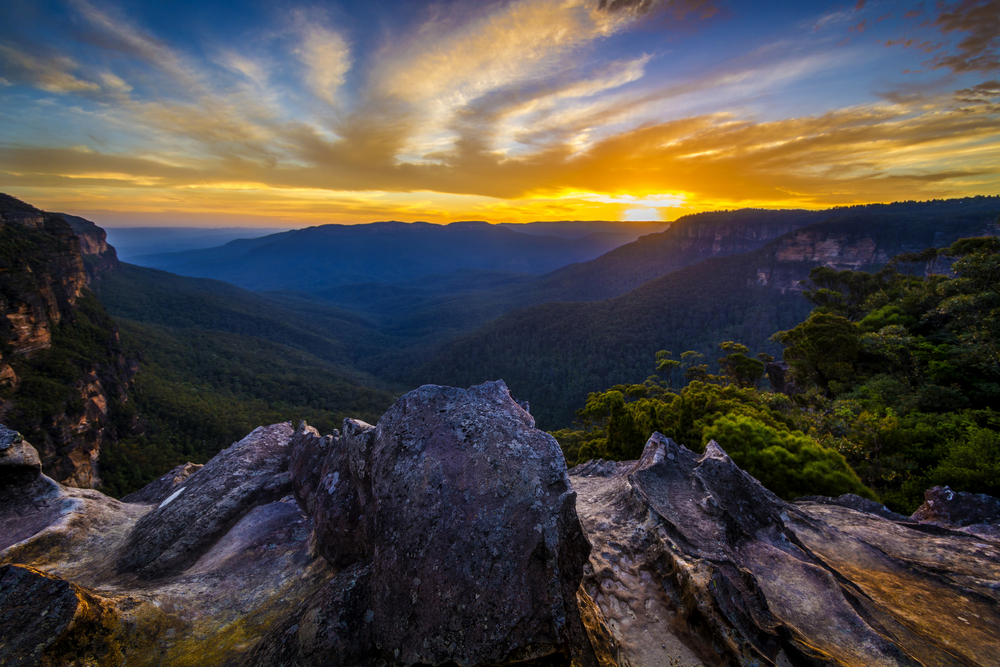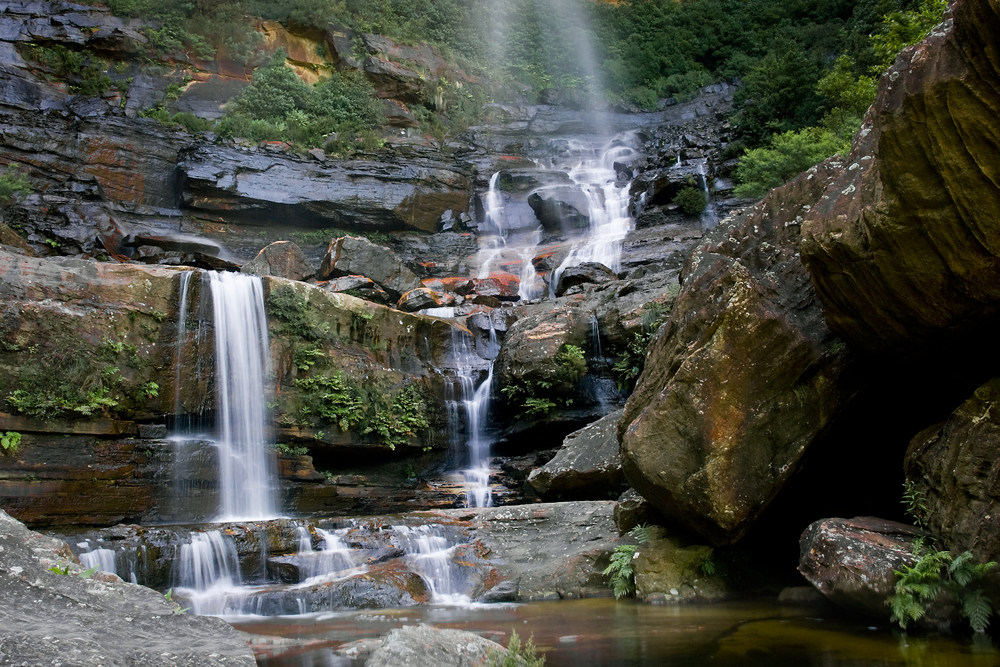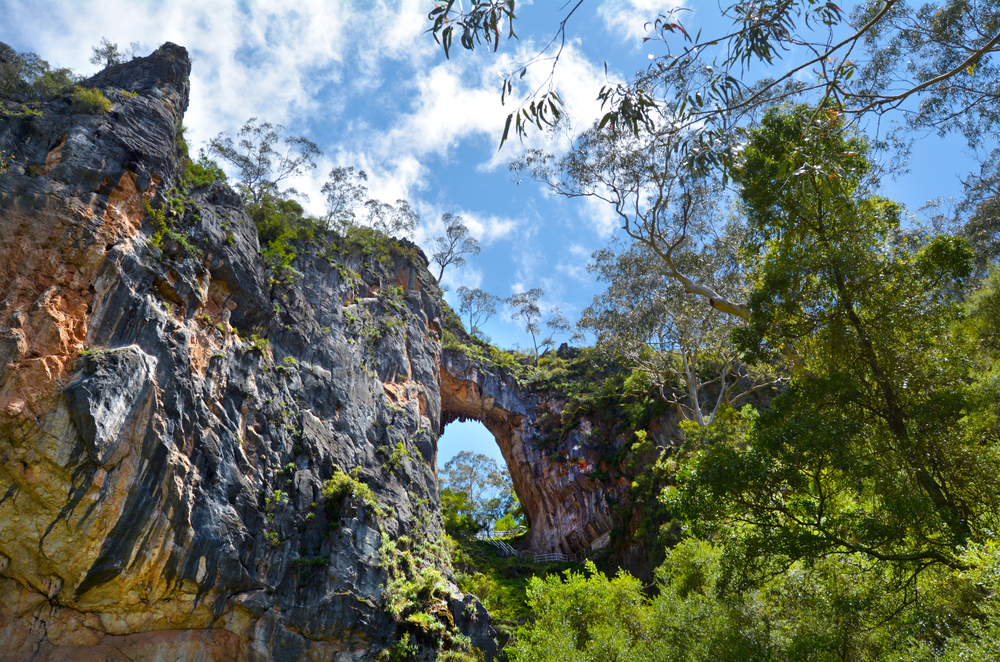The Blue Mountains are a mountainous region in New South Wales which borders on Sydney’s metropolitan area to the west.
The region has a cool climate year-round with a wet summer and cool and dry winter season.
Overnight temperatures can easily fall below freezing in winter and much lower in the canyons and valleys. The climate in the region varies with elevation.
For example, At Katoomba – 3,314-feet – the maximum average temperature in summer is approximately 22 °C. The temperature extends to the 30s at times.
The winter daytime temperature is around 10 to 11 °C and −1 °C on clear nights.
You can expect at least 2-3 snowfalls per year in the Blue Mountains region during winter months.
Temperature Variations At The Blue Mountains
The Blue Mountains have a somewhat more temperate climate compared to the Lower Sydney Region.
You can expect a 2°C drop in temperature with every 300 metres increase in altitude. For example, Mount Victoria is at least 1,000 metres above sea level.
Hence, you can expect the temperature at Mount Victoria to be around 7°C lower than Sydney’s.
During the summer months – from December to February each year – the temperature in the Upper Mountains is approximately 18°C.
On the other hand, the winter temperature in the Upper Mountains – From June to August every year – is approximately 5°C.
The temperature in the Lower Blue Mountains is much warmer compared to the Upper Mountains.
For example, the temperature varies between 16°C in winter and 29°C during the summer months in the Lower Blue Mountains from Lapstone (160 metres above the sea level) to Faulconbridge (446 metres above the sea).
Rainfall At The Blue Mountains
The rainfall at the Blue Mountains is quite similar to that of Sydney’s.
The Upper Mountainous Region receives an average rainfall of approximately 1050mm per year.
On the other hand, the Lower Blue Mountains receive approximately 850mm of rainfall per year.
The rainfall is projected to decrease in the spring and winter months while increasing in the summer and autumn months.
Snowfall At The Blue Mountains
The Blue Mountains Region has a good reputation for snowfall during the winter months.
However, despite its cool temperatures, you will find only 5-6 snow days per year in the upper mountains.
You should be able to spot white blankets of snow covering the vegetation of the mountainous region in the early morning hours of the day.
A thick covering of ice can form of car windscreens during the evenings.
The Blue Mountains should see at least one decent snowfall during the winter season. Of course, some seasons are better than others.
The biggest snowfall at the Blue Mountains was recorded on July 4th 1900.
Around 90cm of snow fell on this day. You should be aware of these details when you decide to tour the Blue Mountains region.
If you are planning to visit the Blue Mountains, look no further than FJ Tours.
At FJ Tours, our friendly sightseeing day tours are the best way to maximise your travel time, which means you can relax and enjoy the beauty of the Blue Mountains.Find out more about FJ Tours Blue Mountains Day Tours here.
Please call us today to book your tour on +612 9637 4466 or you can contact us through our website https://www.fjtours.com.au/contact/




